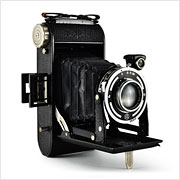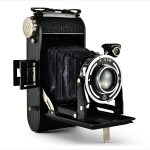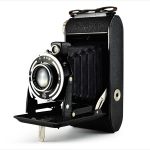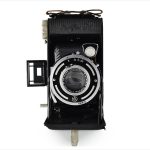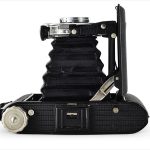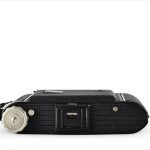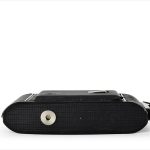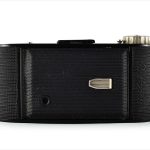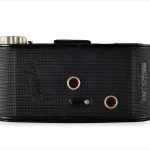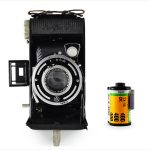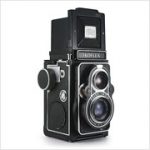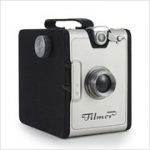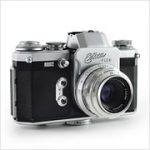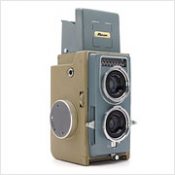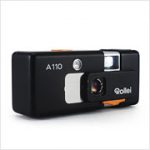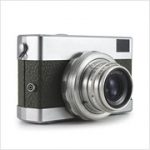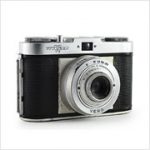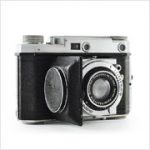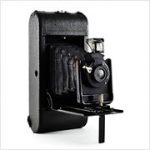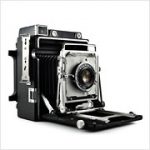Franka Rolfix Jr. Specifications
| Manufacturer: | Franka-Kamerawerk |
| Origin: | West Germany |
| (modern day Germany) | |
| Made in: | Bayreuth, West Germany |
| (modern day Germany) | |
| Introduced: | 1951 |
| Type: | Folding, Viewfinder |
| Format: | 120 Film |
| Dimensions: | 8.3 x 14 x 13 cm (closed) |
| 8.3 x 14 x 3.5 cm (open) |
Franka Rolfix Jr. Overview
The Franka Rolfix Jr. is a medium format folding camera introduced in 1951 by Franka-Kamerawerk in Bayreuth, then part of the American Zone of Allied-Occupied Germany. Founded in 1909 by husband and wife team Franz and Leoni Vyskocil, Franka produced consumer cameras, many of them on behalf of other brands both in Germany and abroad. Designed to be the cheaper alternative to the normal Rolfix by being equipped with slower lenses and shutter assemblies, the Rolfix Jr. was debuted by Franka near the height of its success, about a decade before the company was purchased by the German manufacturer Wirgin.
The Rolfix Jr. can be opened by pressing a small metal button just next to the big silver film advance knob. Once unfolded, a 105mm f/4.5 Radionar lens made by legendary optics company Schneider-Kreuznach is revealed mated to a shutter made by Gauthier capable of speeds ranging from 1/25-1/200 seconds and Bulb. Aperture can be set at the base of the lens, the shutter speed is selected by the outermost ring on the lens, and the focus is tuned by rotating the ring immediately surrounding the front element. Composing is done either by using the pivoting right angle finder at the one o’clock mark on the lens or by flipping up the eye-level finder on the true top of the camera (a “deluxe” version of the Rolfix Jr. featured a fixed optical eye-level finder). Once ready, the shutter can be fired by either pressing the shutter button next to the eye-level finder or using a cable release screwed into the socket at 10 o’clock on the lens. Once tripped, the shutter can be reset by pulling the small lever at 12. A flash sync post can be found at two o’clock.
To stand the Rolfix Jr. up, a “kickstand” can be unfolded from the bottom of the lens platform which is also home to one of two tripod sockets, the other one being located on the true bottom of the camera. On the back of the film door (which can be released by sliding a switch hidden underneath the leather handle) are two red windows for 6×9 and 6×6 format 120 film with a sliding blind. Above the red windows is the Franka logo while underneath it is a label that states that it was manufactured in the “US-Zone” of Germany.
I bought this Franka Rolfix Jr. at a flea market just outside St. Louis for $20. The “booth” was more of a storage unit and it was totally crammed with piles upon piles of junk. Buried deep underneath the detritus was this wonderful German camera which was apparently made available in the United States through the department store Montgomery Ward.
Find your very own Franka Rolfix Jr. on eBay.
McKeown, James M. and Joan C. McKeown’s Price Guide to Antique and Classic Cameras, 2001-2002. (Grantsburg, WI, USA: Centennial Photo Service, 2001), p 231.
